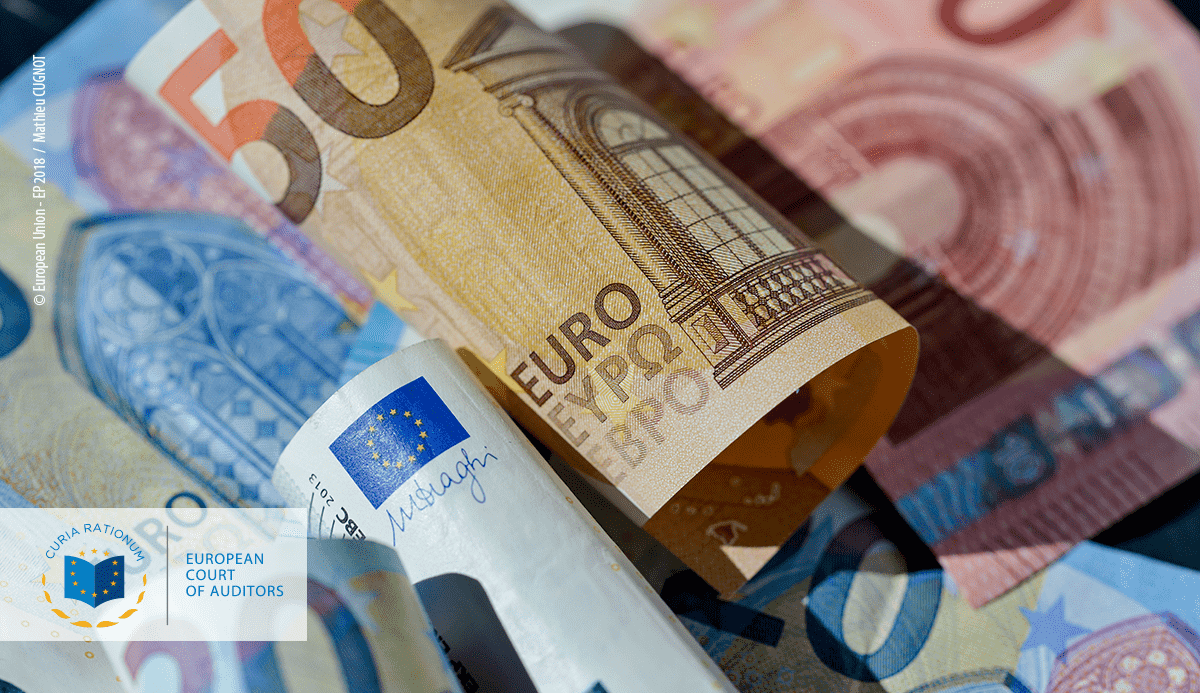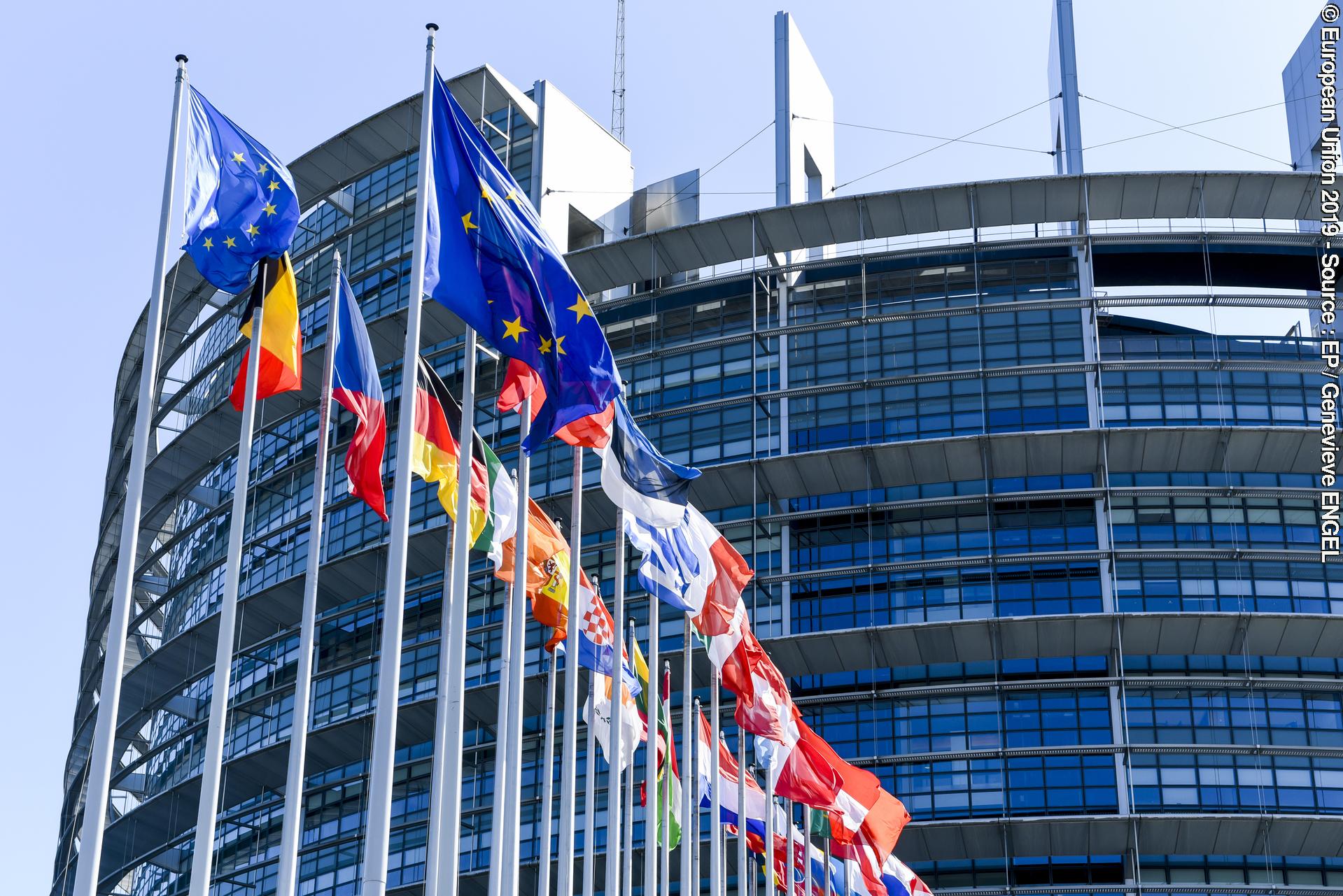
The EU pursues its objectives by implementing policies. It finances those policies through its budget. The ECA’s work involves auditing that budget and the policies which it supports.
What is the money spent on?
During the 2021-2027 multi-annual financial framework (MFF), the EU will spend significantly more than in the previous 2014-2020 programming period. Over the period, the EU will be able to spend €1.8 trillion (expressed in 2018 prices). This includes up to €750 billion for the recovery instrument, the ‘Next Generation EU’ initiative, as the EU’s response to the COVID-19 crisis, on top of a revised 2021-2027 MFF worth €1.1 trillion. The 27 Member States also agreed to partly finance this recovery programme through the issuing of public debt. These decisions mark a truly historic shift in EU finances.
 © European Union
© European Union
The EU’s annual MFF spending is equivalent to around 1% of the EU's gross national income (GNI). For comparison, domestic public spending in the 27 EU Member States accounts for around 50% of GNI.
EU spending works like this. Every seven years, with the consent of the European Parliament, the Council of the European Union adopts an overall spending plan (MFF) which governs spending across all EU policy areas for the following seven-year period. Each year, the Commission puts forward an annual EU budget. The amounts it proposes in each policy area must be within the ceiling set for that year in the MFF.
For the 2021-2027 period, the MFF provides for payments totalling €1 074 billion (in 2018 prices), about €153 billion per year. Spending takes place under the following headings (for more information click here).
- Single Market, Innovation and Digital
- Cohesion, Resilience and Values
- Natural Resources and Environment
- Migration and Border Management
- Security and Defence
- Neighbourhood and the World
- European Public Administration
The largest shares of spending in the EU MFF 2021-2027 budget go to cohesion, resilience and values (35% of budgeted amounts), natural resources and environment (33%), and single market, innovation and digital (12%).
On top of the MFF 2021-2027, the NGEU instrument reinforces expenditure channelled through new and already planned EU budgetary instruments with an additional amount of up to €750 billion (in 2018 prices in the form of loans and non-repayable support. The Recovery and Resilience Facility (RRF) is the centrepiece of NGEU, with €672.5 billion in loans and grants available to support reforms and investments undertaken by EU countries. The RRF follows a spending model different to other instruments. Member States get funds based on the achievement of milestones and targets in implementation of reforms and investments rather than the reimbursement of costs. For five programmes (Rural development, Just transition fund, Invest EU, RescEU, Horizon Europe), funding from the NGEU is additional to funding under the 2021-2027 MFF, while one (REACT EU) is a new initiative.
Where does the money come from?
The Member States have decided that the revenue they receive from a number of sources will be sent to the EU automatically. Revenue from these sources is called “own resources”. Own-resources revenue mainly comes from customs duties collected at the EU’s external borders, revenue contributed by each Member State based on its GNI, and national VAT revenue. Unlike the standard MFF, the NGEU financing is secured by funds borrowed on the capital markets by the Commission on behalf of the EU. New own resources are envisaged to cover part of the EU’s repayments associated with the NGEU.
Who manages the money?
The European Commission has overall responsibility for implementing the annual EU budget. But most spending programmes are managed jointly with national governments, so responsibility for them is shared between national governments and the Commission. The European Commission implements the RRF under direct management with Member States as beneficiaries. Funds are disbursed directly to the Member States based on the progress in the implementation of their national recovery and resilience plans that are assessed by the Commission and then approved by the Council of the European Union.
Who oversees how the EU manages its money?
 European Parliament - © European Union
European Parliament - © European Union
Photo credit: EP/Genevieve ENGEL
The European Parliament represents the EU’s citizens. Part of the Parliament’s role is to satisfy itself each year that the Commission has correctly managed the EU money it is responsible for. To do this, the European Parliament closely examines the implementation of the budget, based on the annual accounts drawn up by the Commission. If it is satisfied that the accounts are accurate and the funds properly spent, it officially approves them, a process known as “granting discharge”. This is where the ECA comes in: in its annual report, the ECA issues an audit opinion about the reliability of the EU’s annual accounts and the legality and regularity of the underlying transactions. The European Parliament refers to our audit opinion when it is deciding whether to approve the EU’s accounts on behalf of EU citizens.
What money does the ECA audit?
Every year, as part of our statement of assurance work, we audit revenue and expenditure under the EU budget. We provide an opinion on whether the annual accounts are reliable, and on whether the underlying transactions complied with the rules. We publish the results of this work in our annual report and in our specific annual reports.
We issue a separate opinion on the regularity of the RRF expenditure.
We also carry out other audits (mainly auditing performance i.e. is the money spent wisely: economically, efficiently and effectively) on specific spending and policy areas that the EU supports, or budgetary and management topics, which are published in special reports.
Related links